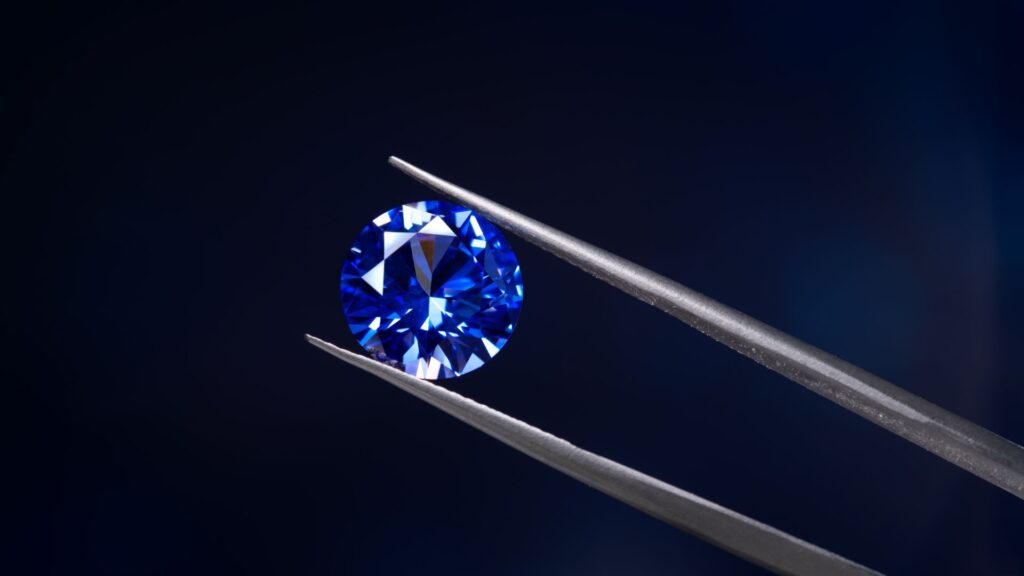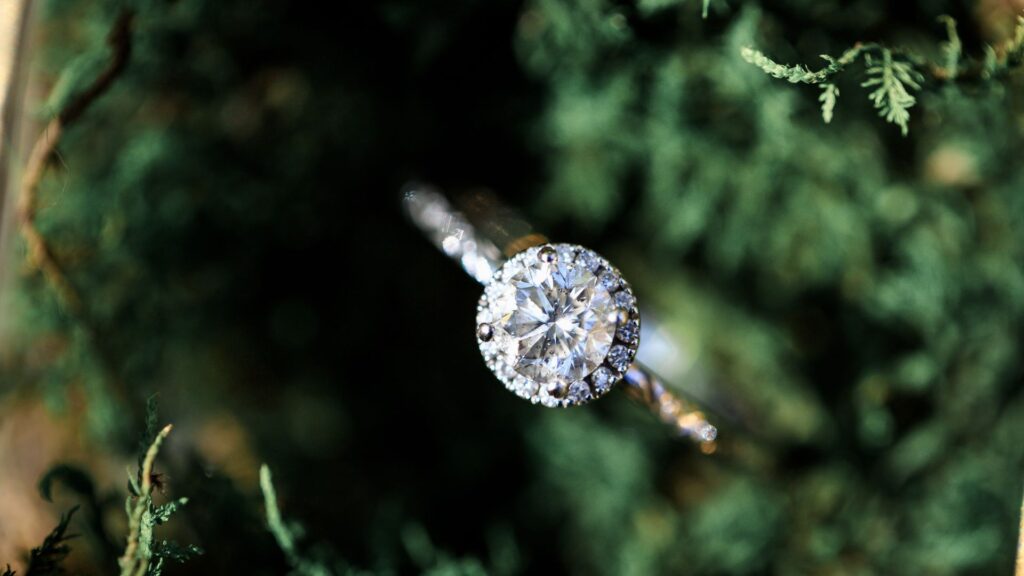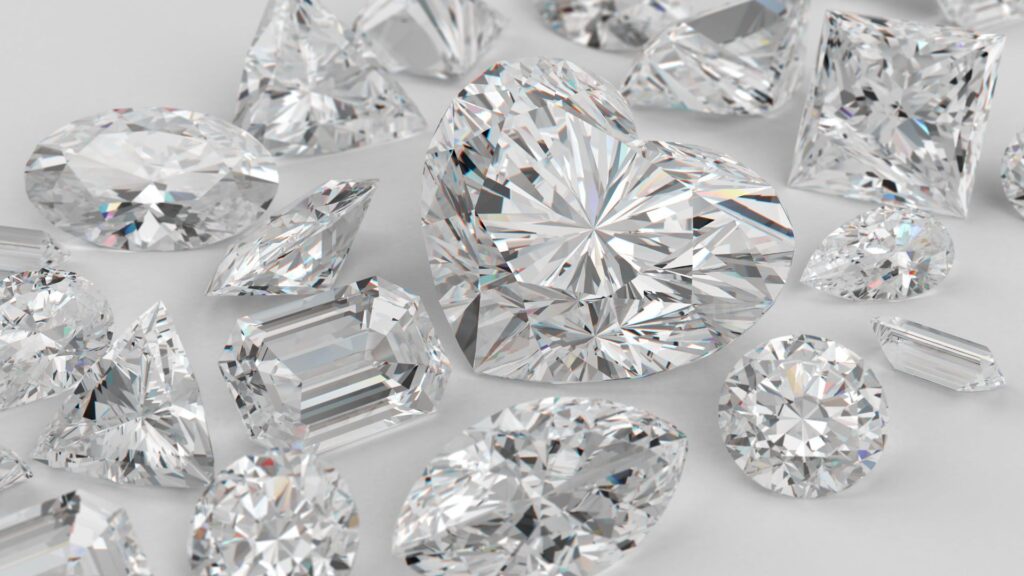In the world of fine jewelry, the allure of loose diamonds captivates both the imagination and the scientific mind. Delving into the intricate science behind these dazzling gems unveils a realm of precision, rarity, and sheer brilliance. From their formation deep within the Earth’s crust to the meticulous craftsmanship that reveals their true sparkle, understanding the science behind loose diamonds is akin to unraveling the mysteries of the cosmos. Join us on a journey as we explore the fascinating interplay of chemistry, physics, and artistry that culminates in the mesmerizing beauty of loose diamonds.

Origins in Earth’s Depths
Loose diamonds, those mesmerizing symbols of elegance and luxury, have a humble beginning far beneath the Earth’s surface. Born from intense heat and pressure deep within the Earth’s mantle, diamonds form over millions of years through a process that remains as awe-inspiring as it is complex. It begins with carbon atoms, subjected to unimaginable forces, crystallizing into the dazzling structures we recognize as diamonds.
These carbon atoms, arranged in a crystal lattice, bond tightly together, creating the remarkable hardness and durability for which diamonds are renowned. Over geological time scales, volcanic eruptions propel these precious gems to the Earth’s surface, where they await discovery by intrepid miners. The journey from the depths of the Earth to the gleaming showcases of jewelry stores is a testament to the enduring allure and mystique of these extraordinary gemstones.
The Chemistry of Crystal Clarity
At the heart of a diamond’s allure lies its remarkable clarity, a quality that speaks to its purity and brilliance. This clarity is the result of the unique chemical composition and crystal structure of diamonds. Composed entirely of carbon atoms, diamonds boast a crystal lattice structure that is exceptionally tight and orderly. This arrangement allows light to pass through the diamond with minimal obstruction, resulting in the remarkable transparency and sparkle that are hallmarks of these gemstones. However, achieving perfect clarity is exceedingly rare in nature, as diamonds often contain impurities or irregularities that can affect their appearance.
Through advances in modern gemology and diamond-cutting techniques, experts can identify and minimize these imperfections, enhancing the overall clarity and beauty of the diamond. Understanding the intricate chemistry behind a diamond’s clarity not only deepens our appreciation for its natural beauty but also informs the process of evaluating and enhancing its quality.

Precision Cuts: Unveiling Brilliance
While a diamond’s raw form holds immense potential, it is through the meticulous process of cutting and shaping that its true brilliance is unleashed. Precision cuts transform rough, unpolished diamonds into the dazzling gems that adorn our most exquisite jewelry pieces. Each cut is carefully calculated to optimize the diamond’s reflective properties, maximizing its brilliance, fire, and scintillation. The art of diamond cutting requires a delicate balance of technical expertise and artistic intuition, as skilled craftsmen meticulously shape each facet to enhance the stone’s natural beauty.
The most popular and iconic diamond cut is the round brilliant, renowned for its unparalleled sparkle and symmetry. However, there are countless other cuts, each with its own unique characteristics and charm, from the timeless elegance of the princess cut to the vintage allure of the cushion cut. Regardless of the chosen cut, the precision and artistry involved in shaping a diamond are essential in unlocking its full potential and ensuring its status as a timeless symbol of beauty and sophistication.
Rarity and Value: Geological Factors
The rarity of diamonds is intrinsically tied to their geological origins, making them one of the most coveted gemstones in the world. Geological factors play a crucial role in determining a diamond’s scarcity and, consequently, its value. Diamonds are primarily found in specific geological formations, such as kimberlite pipes and alluvial deposits, which are the result of ancient volcanic activity and erosion processes. These geological formations are scattered across the globe, with some of the most prolific diamond-producing regions located in Africa, Russia, Australia, and Canada.
Within these regions, the discovery of diamond-bearing deposits is a rarity in itself, requiring extensive geological surveys and exploration efforts. Even then, only a small fraction of these deposits yield diamonds of gem-quality, further underscoring their scarcity. Geological conditions during diamond formation also influence their size, color, and clarity, with larger, colorless, and flawless diamonds being exceptionally rare and commanding premium prices in the market.

Beyond the Surface: Inner Brilliance Revealed
While a diamond’s external beauty is undoubtedly captivating, its inner brilliance holds secrets waiting to be uncovered. Beyond the surface lies a world of optical phenomena and structural intricacies that contribute to a diamond’s mesmerizing allure. Light interacts with the diamond in fascinating ways, refracting and reflecting off its facets to create the dazzling display of sparkle and fire that captivates the eye.
One of the most enchanting optical effects observed in diamonds is known as the “fire,” which refers to the dispersion of light into its spectral colors as it passes through the diamond. This phenomenon is caused by the diamond’s high refractive index and dispersion properties, which scatter light into its constituent colors, creating flashes of red, blue, green, and yellow.
Crafting Beauty: The Art of Diamond Polishing
The journey from rough diamond to polished gem is a testament to the skill and artistry of diamond cutters. Diamond polishing, an intricate and labor-intensive process, involves transforming raw, uncut diamonds into breathtaking gems that dazzle with brilliance and clarity. Each diamond possesses its own unique characteristics, including size, shape, and inclusions, which must be carefully considered by experienced craftsmen before the polishing begins.
The process typically begins with cleaving or sawing the rough diamond into smaller, more manageable pieces. From there, skilled artisans meticulously shape the diamond using a series of specialized tools, including saws, grinders, and polishing wheels, each designed to remove imperfections and create precise facets that maximize the stone’s brilliance.

Diamonds in the Light: Understanding Refraction
The captivating brilliance of diamonds is intrinsically linked to their remarkable ability to manipulate light. Understanding the principles of light refraction within a diamond is essential for appreciating its unique optical properties and maximizing its beauty.
When light enters a diamond, it slows down and bends, a phenomenon known as refraction. This bending of light causes it to deviate from its original path, creating the dazzling sparkle and fire that diamonds are famous for. The extent to which light bends within a diamond is determined by its refractive index, a measure of how much the speed of light is reduced as it passes through the gemstone. In addition to refraction, diamonds also exhibit a phenomenon called total internal reflection, which occurs when light strikes the boundary between the diamond and the surrounding air at a steep angle. Instead of passing through the diamond, the light is reflected back into the stone, intensifying its brilliance and maximizing its sparkle.

Sustainable Sourcing: Ethical Considerations
As consumers become increasingly conscientious about the environmental and social impact of their purchases, the issue of sustainable sourcing has gained prominence in the diamond industry. Ethical considerations encompass a range of factors, including responsible mining practices, fair labor standards, and the prevention of conflict diamonds.
One of the most significant challenges facing the diamond industry is ensuring that diamonds are mined and processed in a manner that minimizes environmental harm and respects local communities. This includes implementing measures to reduce carbon emissions, conserve water resources, and rehabilitate mined land to its natural state.
Conclusion
The journey into the captivating world of loose diamonds has unveiled the intricate science and artistry behind their brilliance. From their origins deep within the Earth to the precision cuts that enhance their sparkle, each facet of a diamond tells a story of geological wonder and human ingenuity. As you delve deeper into the allure of these extraordinary gemstones, let KK Diamonds LLC be your guide. Contact us today at (860) 996-4045 or email us at contact@kkdiamondsllc.com to explore our exquisite collection and discover the perfect diamond for your next cherished moment.
